Abstract
Techniques that reduce the toxicity of bacterial endotoxins are useful for studying the relationship between structure and biological activity. We used ionizing radiation to detoxify a highly refined endotoxin preparation. U.S. standard endotoxin EC. Dose-dependent changes occurred by exposure to 60Co-radiation in the physical properties and biological activities of the endotoxin. Sodium dodecyl sulfate-polyacrylamide slab gel electrophoresis showed gradual loss of the polysaccharide components (O-side chain and R-core) from the endotoxin molecules. In contrast, although endotoxin revealed a complex absorption pattern in the UV range, radiation treatment failed to modify that pattern. Dose-related destruction of the primary toxic component, lipid A, was suggested by the results of activity tests: both the pyrogenicity and limulus reactivity of the endotoxin were destroyed by increasing doses of radiation. The results indicate that the detoxification is probably due to multiple effects of the ionizing radiation on bacterial lipopolysaccharides, and the action involves (i) the destruction of polysaccharide moieties and possibly (ii) the alteration of lipid A component of the endotoxin molecule.
Full text
PDF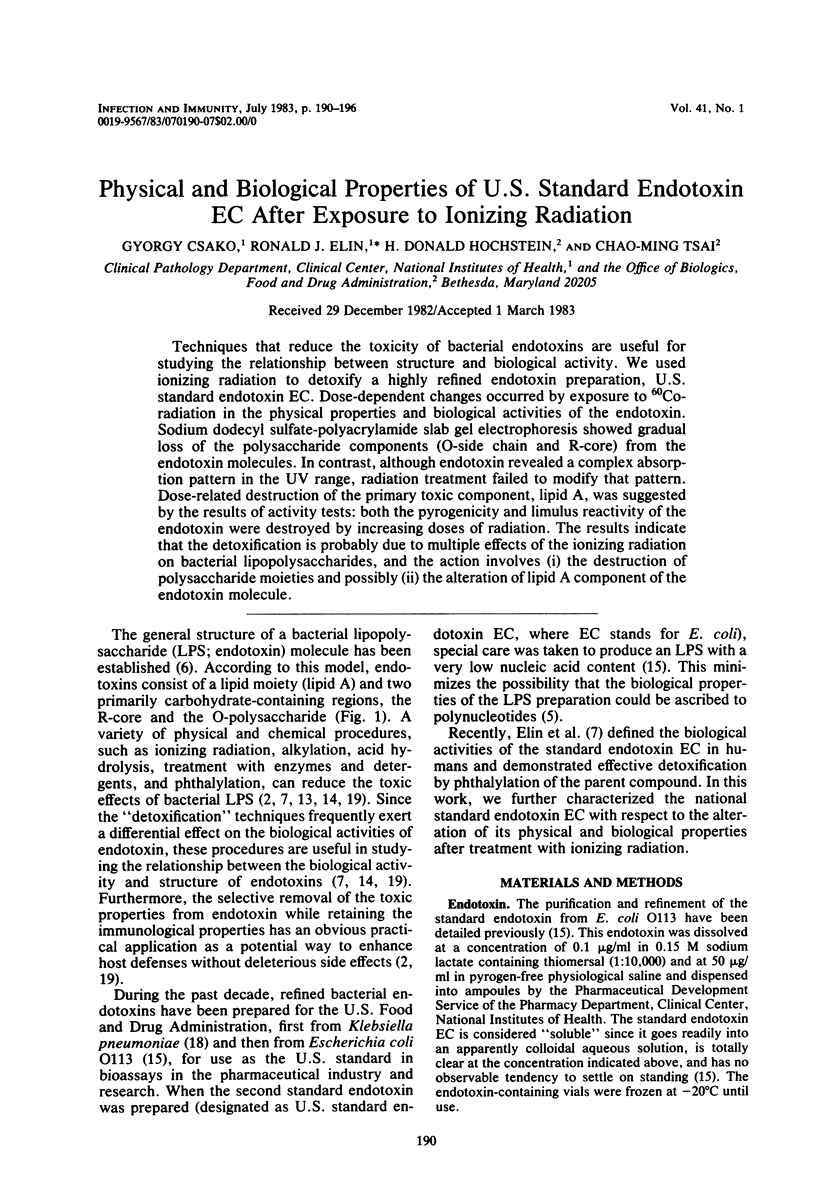
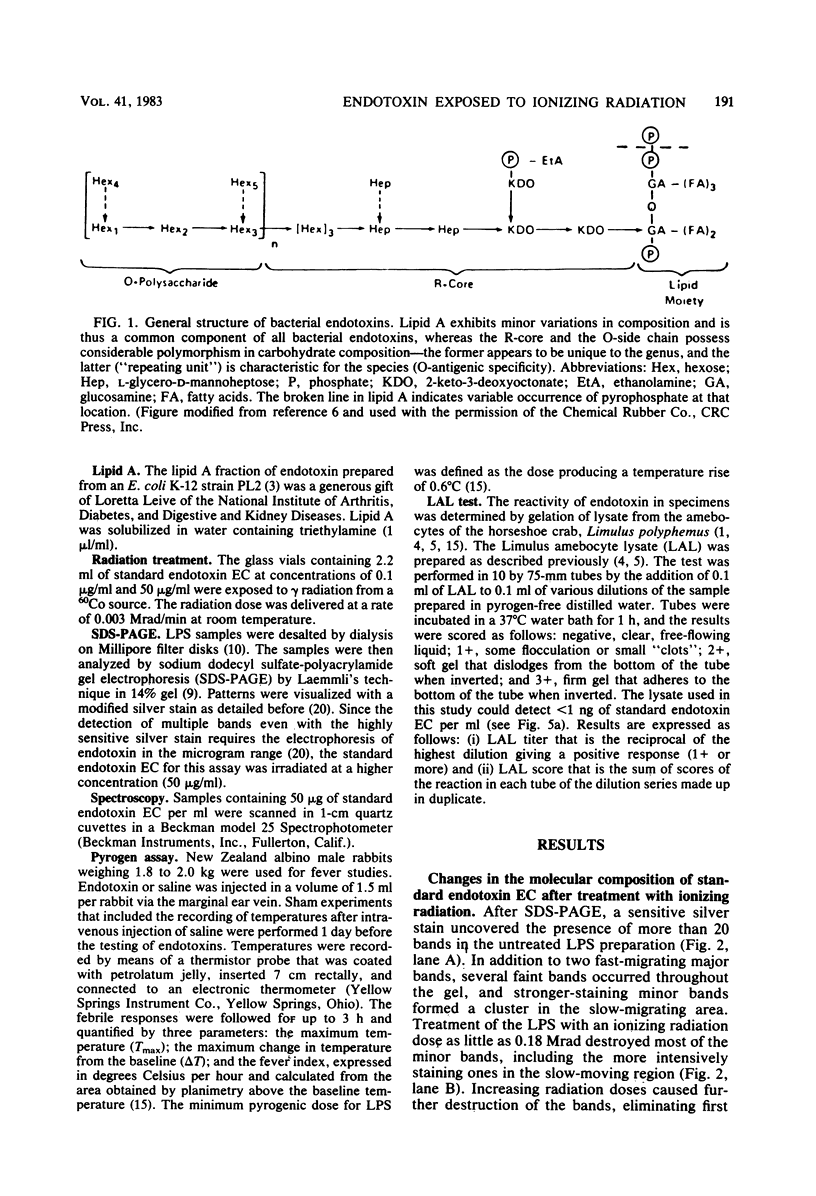
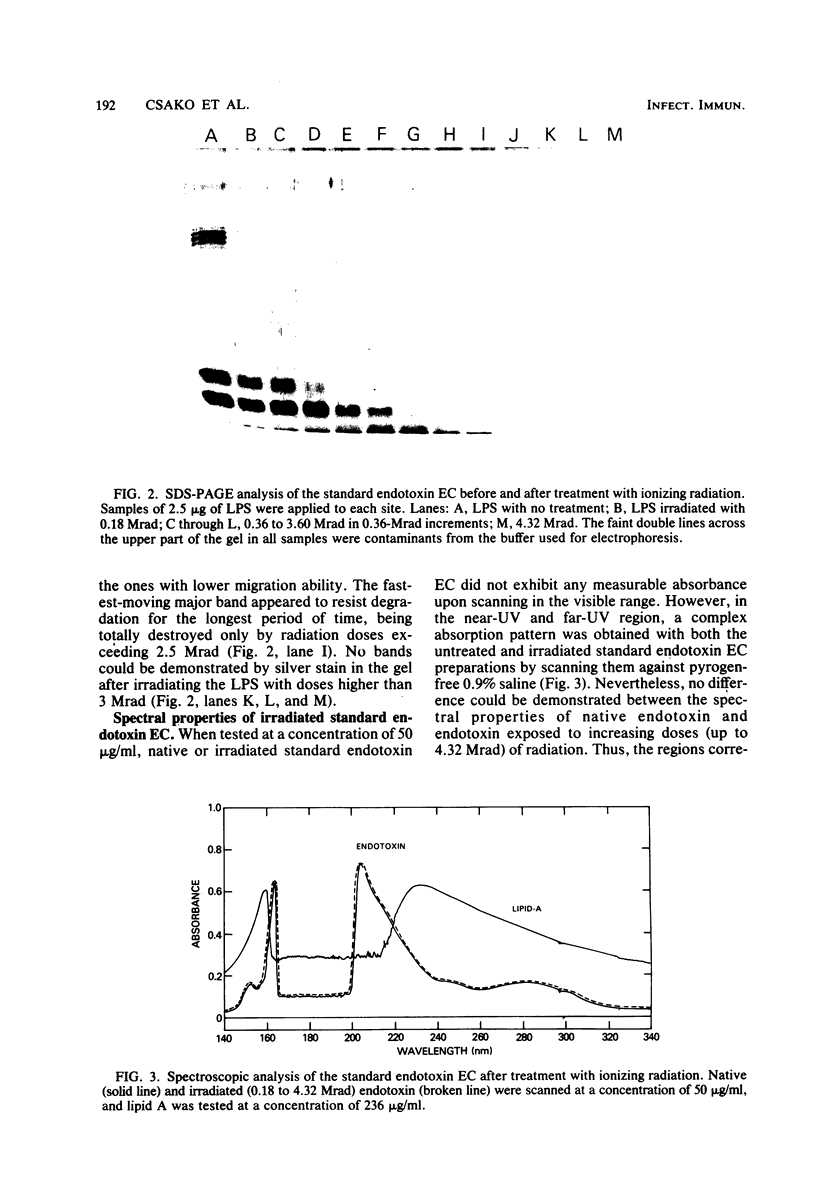
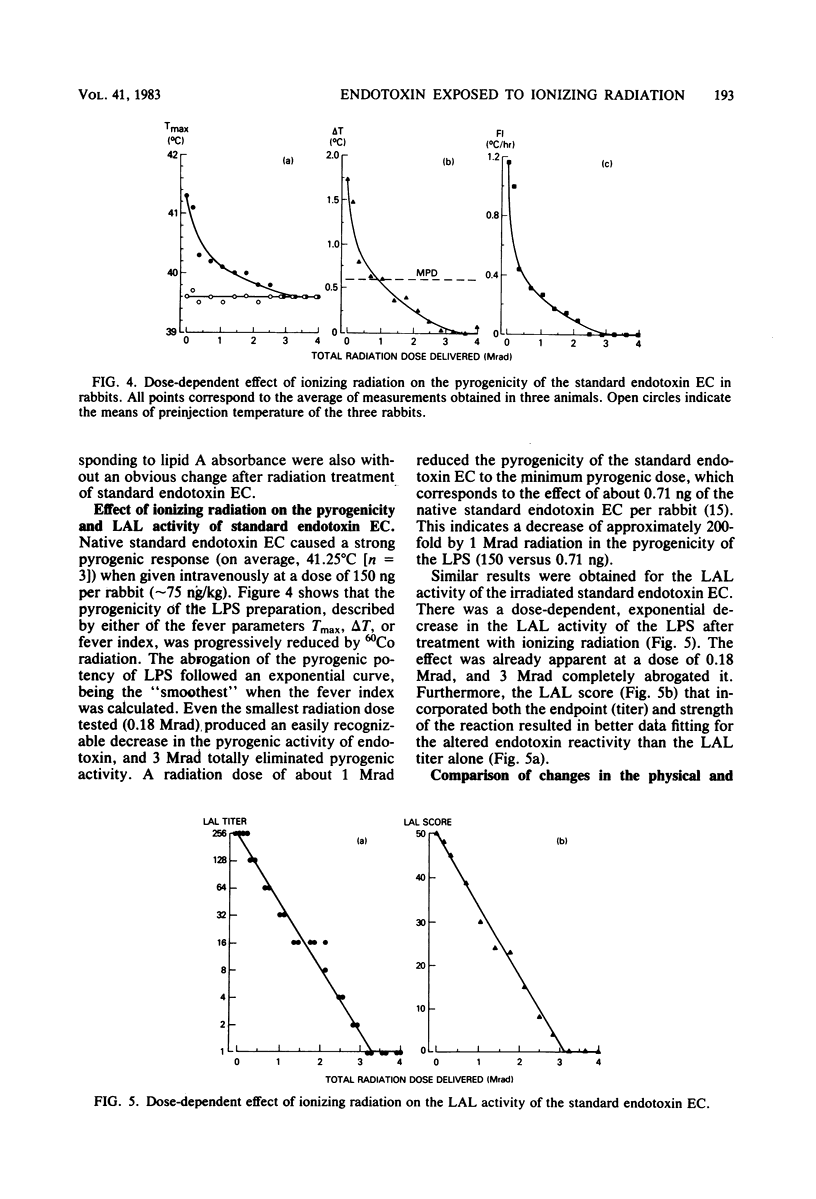
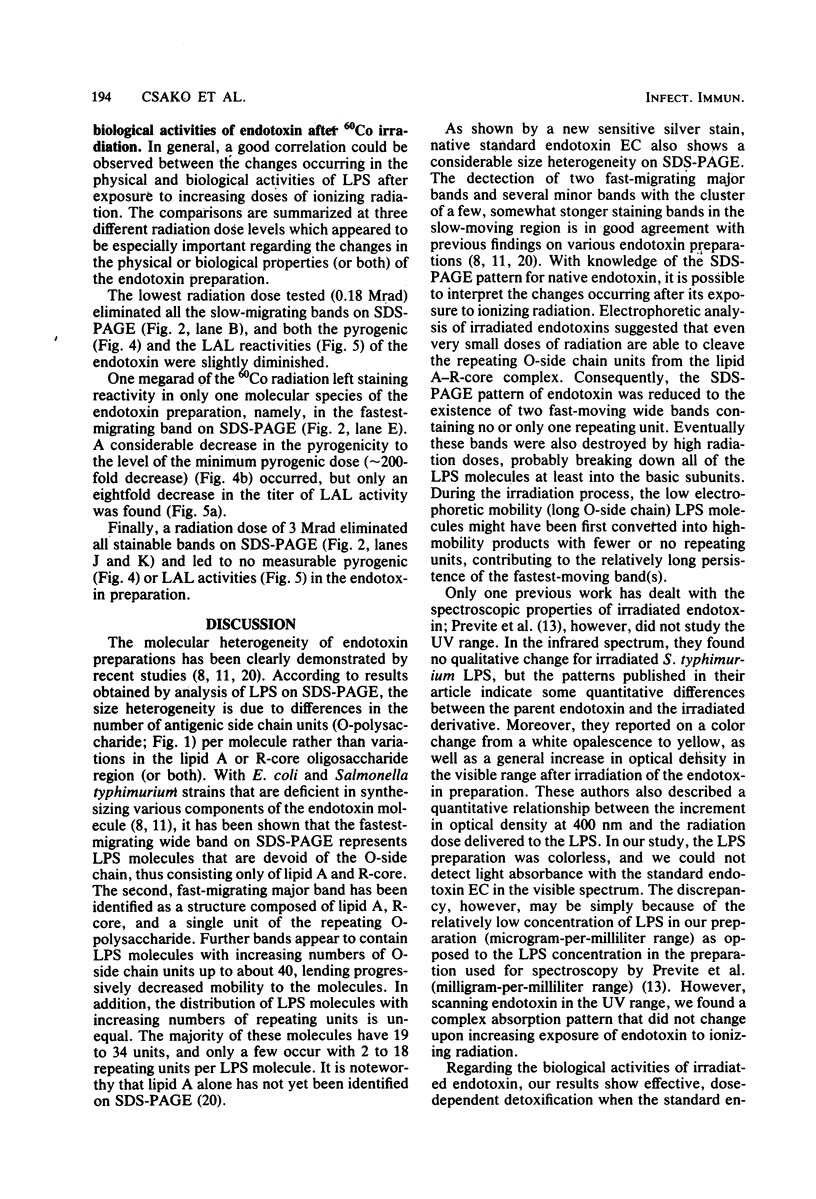
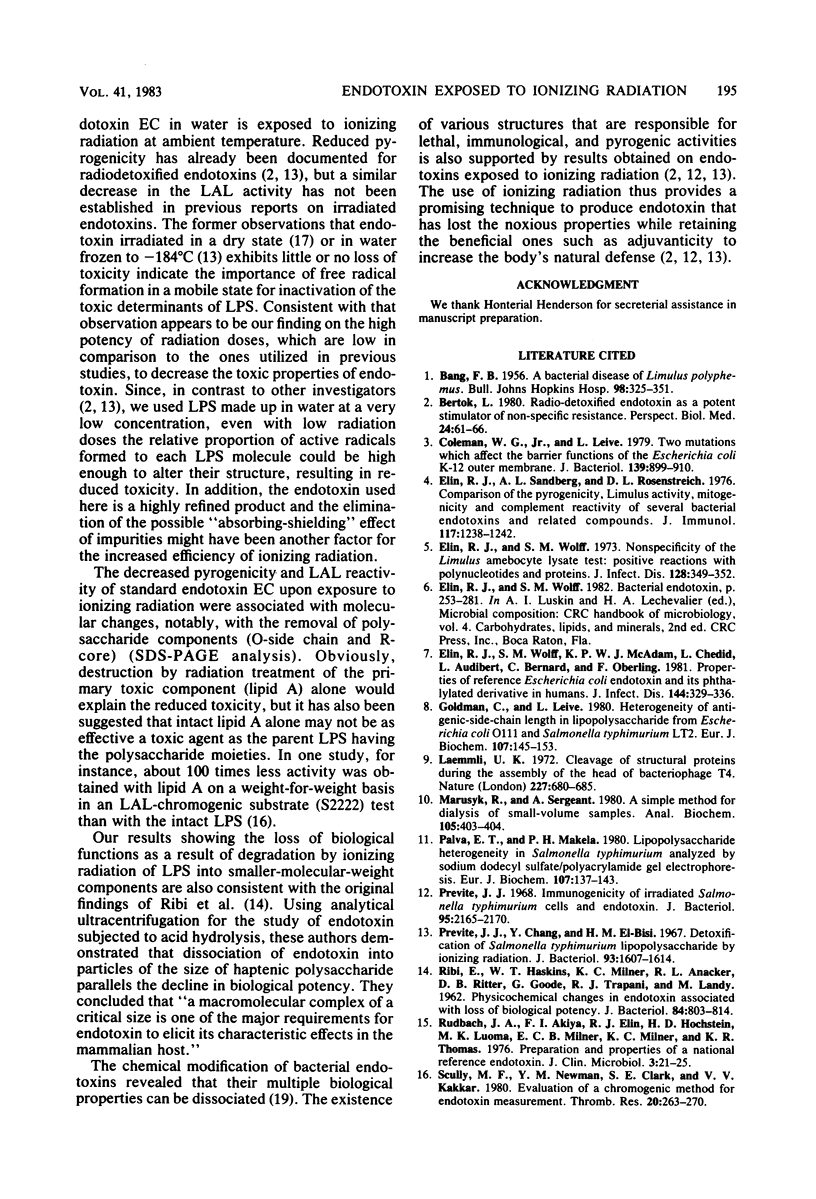
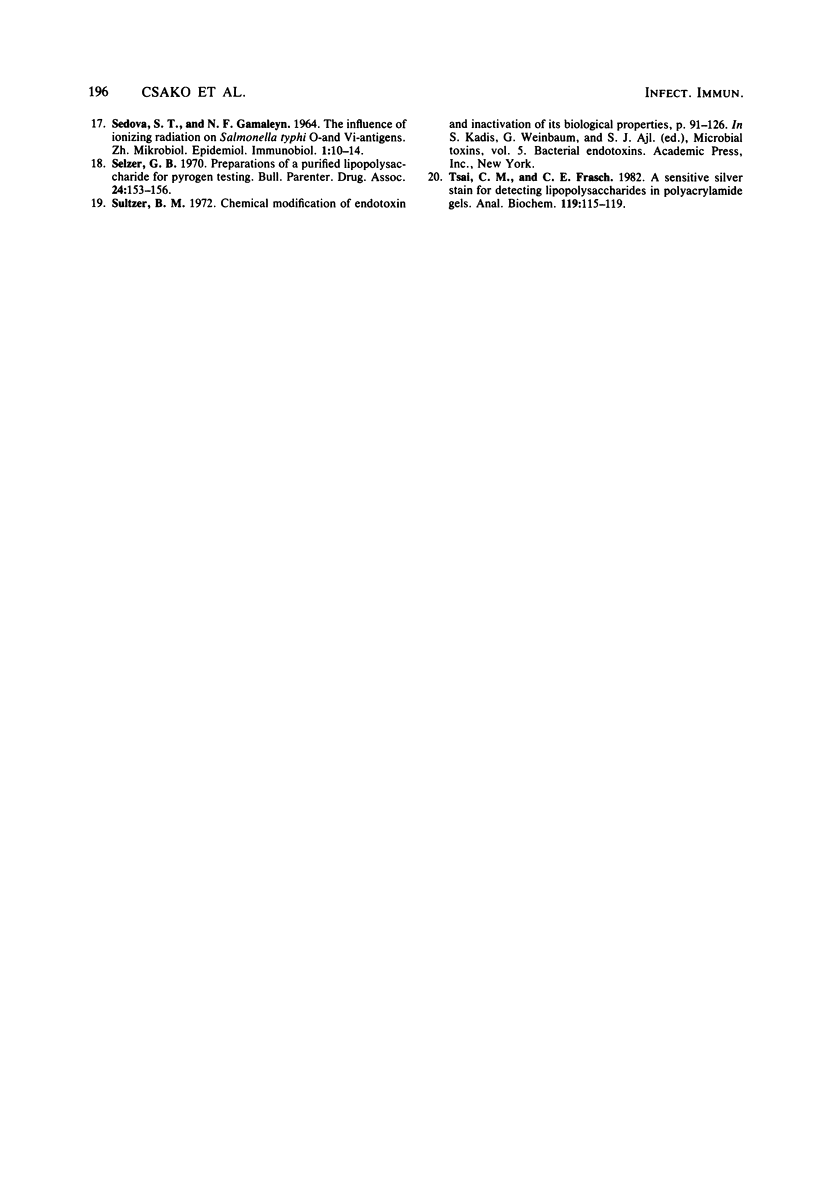
Images in this article
Selected References
These references are in PubMed. This may not be the complete list of references from this article.
- BANG F. B. A bacterial disease of Limulus polyphemus. Bull Johns Hopkins Hosp. 1956 May;98(5):325–351. [PubMed] [Google Scholar]
- Bertók L. Radio-detoxified endotoxin as a potent stimulator of nonspecific resistance. Perspect Biol Med. 1980 Autumn;24(1):61–66. doi: 10.1353/pbm.1980.0090. [DOI] [PubMed] [Google Scholar]
- Coleman W. G., Jr, Leive L. Two mutations which affect the barrier function of the Escherichia coli K-12 outer membrane. J Bacteriol. 1979 Sep;139(3):899–910. doi: 10.1128/jb.139.3.899-910.1979. [DOI] [PMC free article] [PubMed] [Google Scholar]
- Elin R. J., Sandberg A. L., Rosentreich D. L. Comparison of the pyrogenicity, Limulus activity mitogenicity and complement reactivity of several bacterial endotoxins and related compounds. J Immunol. 1976 Oct;117(4):1238–1242. [PubMed] [Google Scholar]
- Elin R. J., Wolff S. M., McAdam K. P., Chedid L., Audibert F., Bernard C., Oberling F. Properties of reference Escherichia coli endotoxin and its phthalylated derivative in humans. J Infect Dis. 1981 Oct;144(4):329–336. doi: 10.1093/infdis/144.4.329. [DOI] [PubMed] [Google Scholar]
- Elin R. J., Wolff S. M. Nonspecificity of the limulus amebocyte lysate test: positive reactions with polynucleotides and proteins. J Infect Dis. 1973 Sep;128(3):349–352. doi: 10.1093/infdis/128.3.349. [DOI] [PubMed] [Google Scholar]
- Goldman R. C., Leive L. Heterogeneity of antigenic-side-chain length in lipopolysaccharide from Escherichia coli 0111 and Salmonella typhimurium LT2. Eur J Biochem. 1980;107(1):145–153. doi: 10.1111/j.1432-1033.1980.tb04635.x. [DOI] [PubMed] [Google Scholar]
- Laemmli U. K. Cleavage of structural proteins during the assembly of the head of bacteriophage T4. Nature. 1970 Aug 15;227(5259):680–685. doi: 10.1038/227680a0. [DOI] [PubMed] [Google Scholar]
- Marusyk R., Sergeant A. A simple method for dialysis of small-volume samples. Anal Biochem. 1980 Jul 1;105(2):403–404. doi: 10.1016/0003-2697(80)90477-7. [DOI] [PubMed] [Google Scholar]
- Palva E. T., Mäkelä P. H. Lipopolysaccharide heterogeneity in Salmonella typhimurium analyzed by sodium dodecyl sulfate polyacrylamide gel electrophoresis. Eur J Biochem. 1980;107(1):137–143. doi: 10.1111/j.1432-1033.1980.tb04634.x. [DOI] [PubMed] [Google Scholar]
- Previte J. J., Chang Y., el-Bisi H. M. Detoxification of Salmonella typhimurium lipopolysaccharide by ionizing radiation. J Bacteriol. 1967 May;93(5):1607–1614. doi: 10.1128/jb.93.5.1607-1614.1967. [DOI] [PMC free article] [PubMed] [Google Scholar]
- RIBI E., HASKINS W. T., MILNER K. C., ANACKER R. L., RITTER D. B., GOODE G., TRAPANI R. J., LANDY M. Physicochemical changes in endotoxin associated with loss of biological potency. J Bacteriol. 1962 Oct;84:803–814. doi: 10.1128/jb.84.4.803-814.1962. [DOI] [PMC free article] [PubMed] [Google Scholar]
- Rudbach J. A., Akiya F. I., Elin R. J., Hochstein H. D., Luoma M. K., Milner E. C., Milner K. C., Thomas K. R. Preparation and properties of a national reference endotoxin. J Clin Microbiol. 1976 Jan;3(1):21–25. doi: 10.1128/jcm.3.1.21-25.1976. [DOI] [PMC free article] [PubMed] [Google Scholar]
- SEDOVA Ts. O VLIIANII IONIZIRUIUSHCHE I RADIATSII NA BRUISHNOTIFOZNYE O AND VI-ANTIGENY. Zh Mikrobiol Epidemiol Immunobiol. 1964 Jan;41:10–14. [PubMed] [Google Scholar]
- Scully M. F., Newman Y. M., Clark S. E., Kakkar V. V. Evaluation of a chromogenic method for endotoxin measurement. Thromb Res. 1980 Oct 15;20(2):263–270. doi: 10.1016/0049-3848(80)90391-6. [DOI] [PubMed] [Google Scholar]
- Selzer G. B. Preparation of a purified lipopolysaccharide for pyrogen testing. Bull Parenter Drug Assoc. 1970 May-Jun;24(3):153–156. [PubMed] [Google Scholar]
- Tsai C. M., Frasch C. E. A sensitive silver stain for detecting lipopolysaccharides in polyacrylamide gels. Anal Biochem. 1982 Jan 1;119(1):115–119. doi: 10.1016/0003-2697(82)90673-x. [DOI] [PubMed] [Google Scholar]



